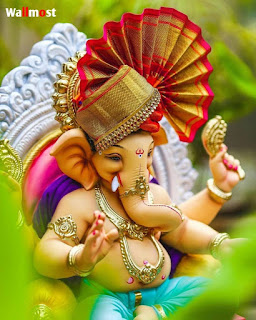History of radio § Broadcasting
Radio communication
In radio communication systems, information
is carried across space using radio waves. At the sending end, the information
to be sent is converted by some type of transducer to a
time-varying electrical
signal called the modulation signal. The modulation signal may
be an audio
signal representing sound from a microphone, a video signal representing
moving images from a video camera,
or a digital
signal consisting of a sequence of bits representing
binary data from a computer. The modulation signal is applied to a radio transmitter. In the
transmitter, an electronic
oscillator generates an alternating
current oscillating at a radio frequency, called
the carrier
wave because it serves to "carry" the information
through the air. The information signal is used to modulate the carrier,
varying some aspect of the carrier wave, impressing the information on the
carrier. Different radio systems use different modulation methods:
·
AM (amplitude modulation) – in
an AM transmitter, the amplitude (strength) of the radio
carrier wave is varied by the modulation signal.
·
FM (frequency modulation) – in
an FM transmitter, the frequency of the radio carrier wave
is varied by the modulation signal.
·
FSK (frequency shift keying) –
used in wireless digital devices to transmit digital signals, the frequency of the carrier wave is shifted periodically
between two frequencies that represent the two binary digits, 0 and 1, to transmit a sequence of bits.
·
OFDM (orthogonal
frequency division multiplexing) – a family of complicated digital modulation methods
very widely used in high bandwidth systems such as WiFi networks, cell phones, digital television broadcasting,
and digital audio broadcasting (DAB)
to transmit digital data using a minimum of radio spectrum bandwidth. OFDM has higher spectral efficiency and
more resistance to fading than AM or FM. Multiple radio
carrier waves closely spaced in frequency are transmitted within the radio
channel, with each carrier modulated with bits from the incoming bit stream so multiple bits are being sent simultaneously, in parallel. At the
receiver the carriers are demodulated and the bits are combined in the proper
order into one bit stream.
Many other types of modulation are also used.
The modulated carrier is amplified in
the transmitter, and applied to a transmitting antenna which radiates the
energy as radio waves. The radio waves carry the information to the receiver
location.
At the receiver, the radio wave induces a tiny
oscillating voltage in the
receiving antenna which is a weaker replica of the current in the transmitting
antenna. This voltage is applied to the radio receiver, which amplifies the weak
radio signal so it is stronger, then demodulates it,
extracting the original modulation signal from the modulated carrier wave. The
modulation signal is converted by a transducer back to a
human-usable form: an audio signal is converted to sound waves by a
loudspeaker or earphones, a video signal is
converted to images by a display, while a digital
signal is applied to a computer or microprocessor, which interacts with human
users.
The radio waves from many transmitters pass through the
air simultaneously without interfering with each other. The receiving antenna
typically picks up the radio signals of many transmitters. These can be
separated in the receiver because each transmitter's radio waves oscillate at a
different rate, in other words each transmitter has a different frequency, measured in kilohertz (kHz), megahertz (MHz)
or gigahertz (GHz). The
receiver uses tuned
circuits to select the radio signal desired out of all the
signals picked up by the antenna, and reject the others. A tuned circuit (also
called resonant circuit or tank circuit) acts like a resonator, similarly to
a tuning fork. It has a natural resonant
frequency at which it oscillates. The resonant frequency of the
receiver's tuned circuit is adjusted by the user to the frequency of the
desired radio station; this is called "tuning". The oscillating radio
signal from the desired station causes the tuned circuit to resonate, oscillate in
sympathy, and it passes the signal on to the rest of the receiver. Radio
signals at other frequencies are blocked by the tuned circuit and not passed
on.
 Radio communication. Information such as sound is converted by a transducer such as a microphone to an electrical signal, which modulates a radio waveproduced by the transmitter. A receiver intercepts the radio wave and extracts the information-bearing modulation signal, which is converted back to a human usable form with another transducer such as a loudspeaker.
Radio communication. Information such as sound is converted by a transducer such as a microphone to an electrical signal, which modulates a radio waveproduced by the transmitter. A receiver intercepts the radio wave and extracts the information-bearing modulation signal, which is converted back to a human usable form with another transducer such as a loudspeaker.


Comments
Post a Comment